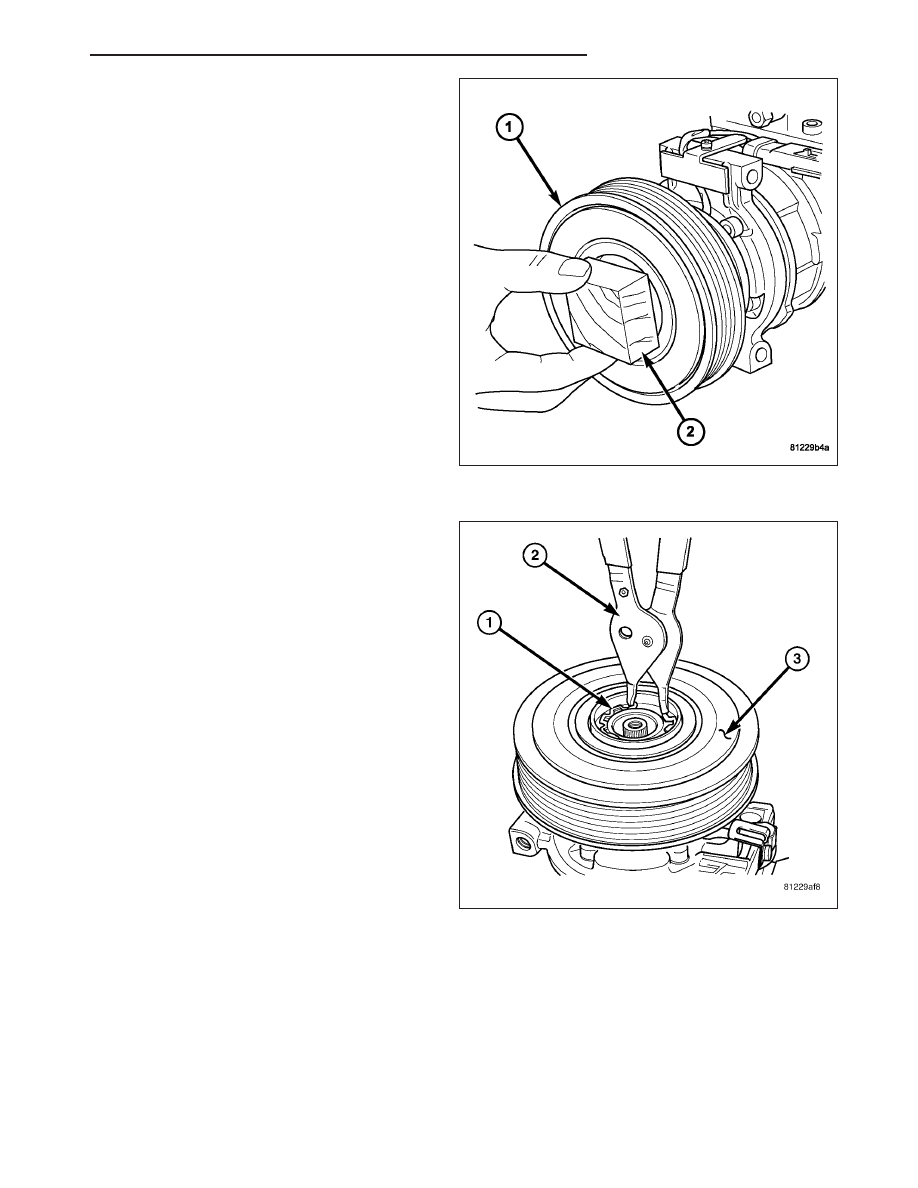Content .. 1536 1537 1538 1539 ..
Dodge Durango (HB). Manual - part 1538

CAUTION: When installing the pulley and bearing
assembly, DO NOT mar the friction surfaces of the
pulley or premature failure of the clutch will result.
4. Install the pulley and bearing assembly (1) onto the
front cover of the A/C compressor. If necessary, tap
the pulley gently with a block of wood (2) placed on
the pulley friction surface.
CAUTION: The snap ring must be fully and prop-
erly seated in the groove or it will vibrate out,
resulting in a clutch failure and severe damage to
the A/C compressor.
NOTE: A new snap ring must be used to secure
the pulley and bearing assembly to the A/C com-
pressor. The bevel side of the snap ring must face
outward.
5. Using snap ring pliers (Special Tool C-4574 or
equivalent) (2), install the external snap ring (1)
that secures the pulley and bearing assembly (3) to
the front cover of the A/C compressor. Be certain
that the snap ring is fully and properly seated in the
groove.
HB
CONTROLS - FRONT
24 - 345